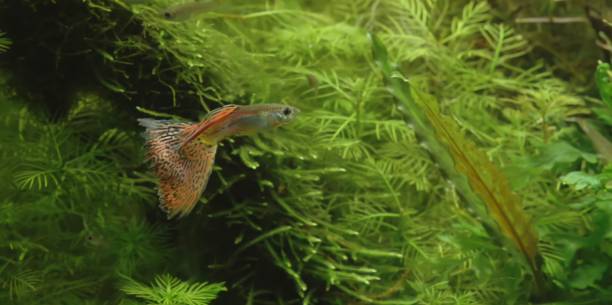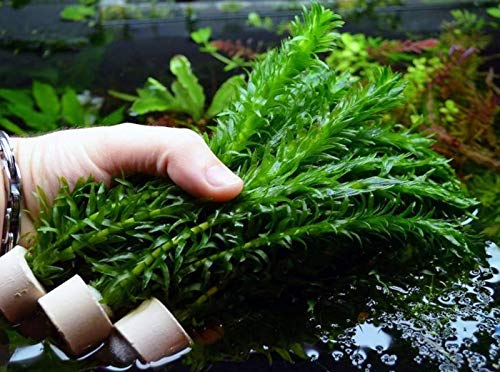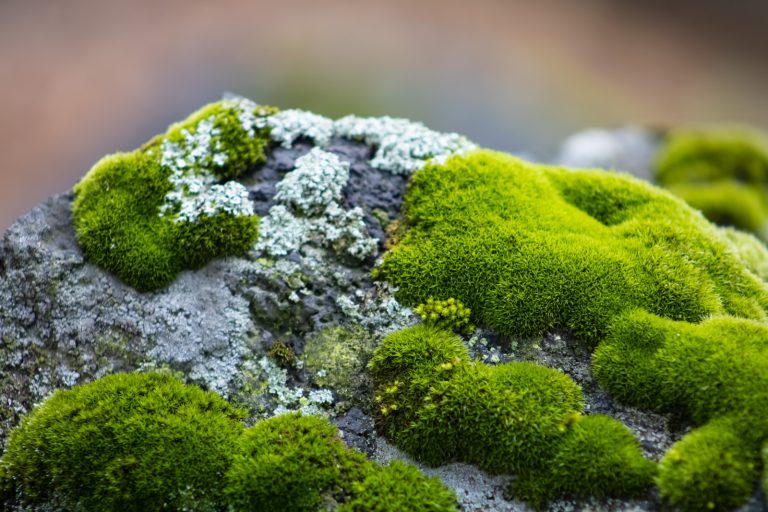Java moss is a popular and versatile aquatic plant commonly used in aquariums and aquascapes. Its vibrant green color and easy maintenance make it a favorite among hobbyists. However, there are instances where java moss may turn brown, indicating an underlying issue. In this article, we will explore the possible causes of java moss turning brown, discuss preventive measures, and provide solutions to revive and maintain its lush green appearance.
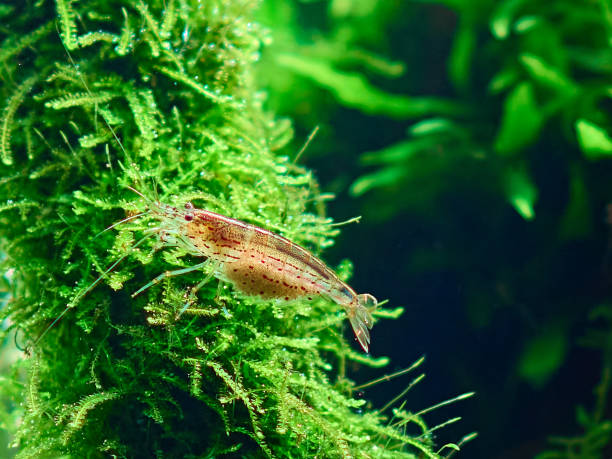
Java Moss Turning Brown: Causes and Prevention
Insufficient Lighting
Java moss requires adequate lighting to carry out photosynthesis, the process by which plants convert light into energy. When exposed to low light conditions, java moss may struggle to thrive, resulting in browning. Ensure your aquarium or aquascape receives sufficient light, ideally using full-spectrum aquarium lights. Position the lights close enough to provide the necessary illumination but avoid excessive exposure, as it can lead to algae growth.
Poor Water Quality
Water quality plays a crucial role in the health of aquatic plants. High levels of ammonia, nitrites, and nitrates can stress java moss and cause it to turn brown. Regularly test your water parameters using a reliable test kit and maintain appropriate levels. Perform regular water changes to remove accumulated toxins and maintain a stable and healthy environment for your java moss.
Insufficient Nutrients
Java moss requires essential nutrients to grow and thrive. A lack of these nutrients can lead to browning and stunted growth. Consider adding a liquid fertilizer or root tabs specifically formulated for aquarium plants. These products provide the necessary nutrients, including nitrogen, phosphorus, and potassium, to support healthy growth and prevent java moss from turning brown.
Algae Infestation
Algae can compete with java moss for nutrients and light, leading to its decline. If your java moss is turning brown and you notice excessive algae growth, take immediate action to control and eliminate the algae. Introduce algae-eating organisms like snails or shrimp, maintain a regular cleaning routine, and ensure proper filtration to minimize algae growth.
Improper Water Temperature
Java moss thrives in a temperature range of 70-82°F (21-28°C). Extreme temperature fluctuations or exposure to temperatures outside this range can cause stress and browning. Use a reliable aquarium heater to maintain a consistent water temperature within the suitable range for java moss.
Lack of Carbon Dioxide (CO2)
Carbon dioxide is an essential element for plant growth, including java moss. Inadequate levels of CO2 can hinder photosynthesis and result in browning. Consider supplementing your aquarium or aquascape with a carbon dioxide system to provide a steady supply of this vital gas. Alternatively, you can use liquid carbon supplements as an alternative carbon source.
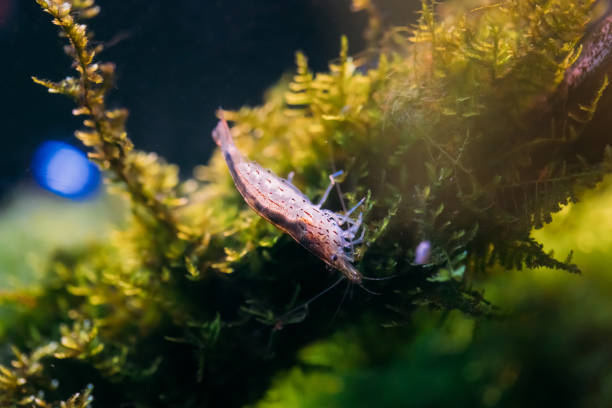
Solutions for Reviving Brown Java Moss
Trim and Remove Brown Portions
If your java moss has already turned brown, it’s essential to remove the affected portions promptly. Use a pair of sharp scissors or aquascaping tools to trim the brown sections, leaving behind healthy green portions. Removing the brown parts prevents further decay and allows the plant to redirect its resources towards regrowth.
Improve Lighting Conditions
Evaluate your lighting setup and ensure it meets the requirements of java moss. Consider upgrading to full-spectrum LED lights or adjusting the position of the existing lights to provide better coverage. Aim for a lighting duration of 8-10 hours per day to promote healthy photosynthesis.
Optimize Water Parameters
Monitor and maintain optimal water parameters to support the recovery of your java moss. Regularly test for ammonia, nitrites, nitrates, and pH levels. If necessary, perform water changes to restore balance and remove accumulated toxins. Additionally, consider the use of a water conditioner to remove chlorine and chloramine, which can be harmful to aquatic plants.
Provide Nutrient Supplements
To aid in the recovery of brown java moss, supply it with essential nutrients. Use a high-quality liquid fertilizer or root tabs specifically formulated for aquarium plants. Follow the manufacturer’s instructions for dosage and application frequency to avoid overfertilization, which can be detrimental to your aquatic ecosystem.
Control Algae Growth
To prevent further browning and promote healthy java moss growth, actively control algae growth. Regularly clean the aquarium or aquascape, remove excess organic matter, and maintain efficient filtration. Consider adding algae-eating organisms such as nerite snails, Amano shrimp, or Siamese algae eaters to help keep algae under control.
Maintain Stable Water Temperature
Maintaining a stable water temperature within the recommended range is crucial for java moss recovery. Ensure your aquarium or aquascape has a reliable heater and a thermometer to monitor the temperature. Avoid sudden temperature fluctuations, as they can stress the plant and impede its ability to recover.
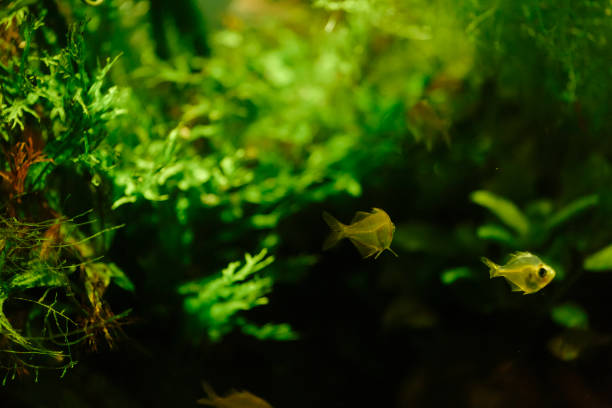
Frequently Asked Questions (FAQs)
Q: Why is my java moss turning brown?
A: Java moss can turn brown due to various factors, including insufficient lighting, poor water quality, inadequate nutrients, algae infestation, improper water temperature, and a lack of carbon dioxide. Addressing these issues can help restore the health and vibrant green color of your java moss.
Q: Can I revive brown java moss?
A: Yes, brown java moss can be revived with proper care and intervention. Trim the brown portions, improve lighting conditions, optimize water parameters, provide nutrient supplements, control algae growth, and maintain a stable water temperature to aid in the recovery process.
Q: How long does it take for java moss to turn green again?
A: The time it takes for java moss to turn green again depends on the severity of the issue and the effectiveness of the corrective measures taken. With the right conditions and care, you may start noticing improvements within a few weeks to a couple of months.
Q: Should I completely remove brown java moss?
A: It is not necessary to remove the entire plant if only certain portions have turned brown. Trim the brown sections and allow the healthy green parts to recover and grow. Removing the affected portions helps prevent further decay and allows the plant to allocate resources towards regrowth.
Q: Can algae cause java moss to turn brown?
A: Yes, excessive algae growth can compete with java moss for nutrients and light, leading to browning. Controlling algae growth through regular cleaning, algae-eating organisms, and proper filtration can help maintain the health and appearance of your java moss.
Q: Can I use carbon dioxide to prevent java moss from turning brown?
A: Yes, providing a steady supply of carbon dioxide (CO2) can help prevent java moss from turning brown. Consider using a carbon dioxide system or liquid carbon supplements as an alternative carbon source. Proper CO2 levels support healthy photosynthesis and promote vibrant green growth in java moss.
Conclusion
Java moss turning brown can be a sign of underlying issues affecting its health and appearance. By addressing factors such as insufficient lighting, poor water quality, inadequate nutrients, algae infestation, improper water temperature, and a lack of carbon dioxide, you can revive and maintain the lush green color of your java moss. Regular monitoring, proper care, and timely interventions are key to ensuring the long-term vitality and beauty of this versatileaquatic plant.
Remember, maintaining optimal lighting, water quality, nutrient levels, and controlling algae growth are essential for the well-being of your java moss. Regularly trim and remove brown portions, provide necessary supplements, and ensure stable water temperature to aid in its recovery. With proper care and attention, your java moss will regain its vibrant green color, enhancing the beauty of your aquarium or aquascape.
